12 rare animals, plants and trees to discover in our parks
Montréal’s parks feature natural environments that are home to a rich diversity of flora and wildlife, including the following rare and little-known species, some of which have at-risk status.
In this time of ecological transition, when we must rethink our relationship with the environment to prevent certain species from disappearing, it bears recalling that each animal, plant or flower plays a vital role in maintaining the fragile balance between the ecosystems in our natural environments.
Wildlife
Map turtle
This vulnerable species is found in Parc-nature du Cap-Saint-Jacques.
- The map turtle gets its name from the circular motifs on its shell.
- It favours shallow bays and leaves the water only to lay its eggs and soak in the sun.
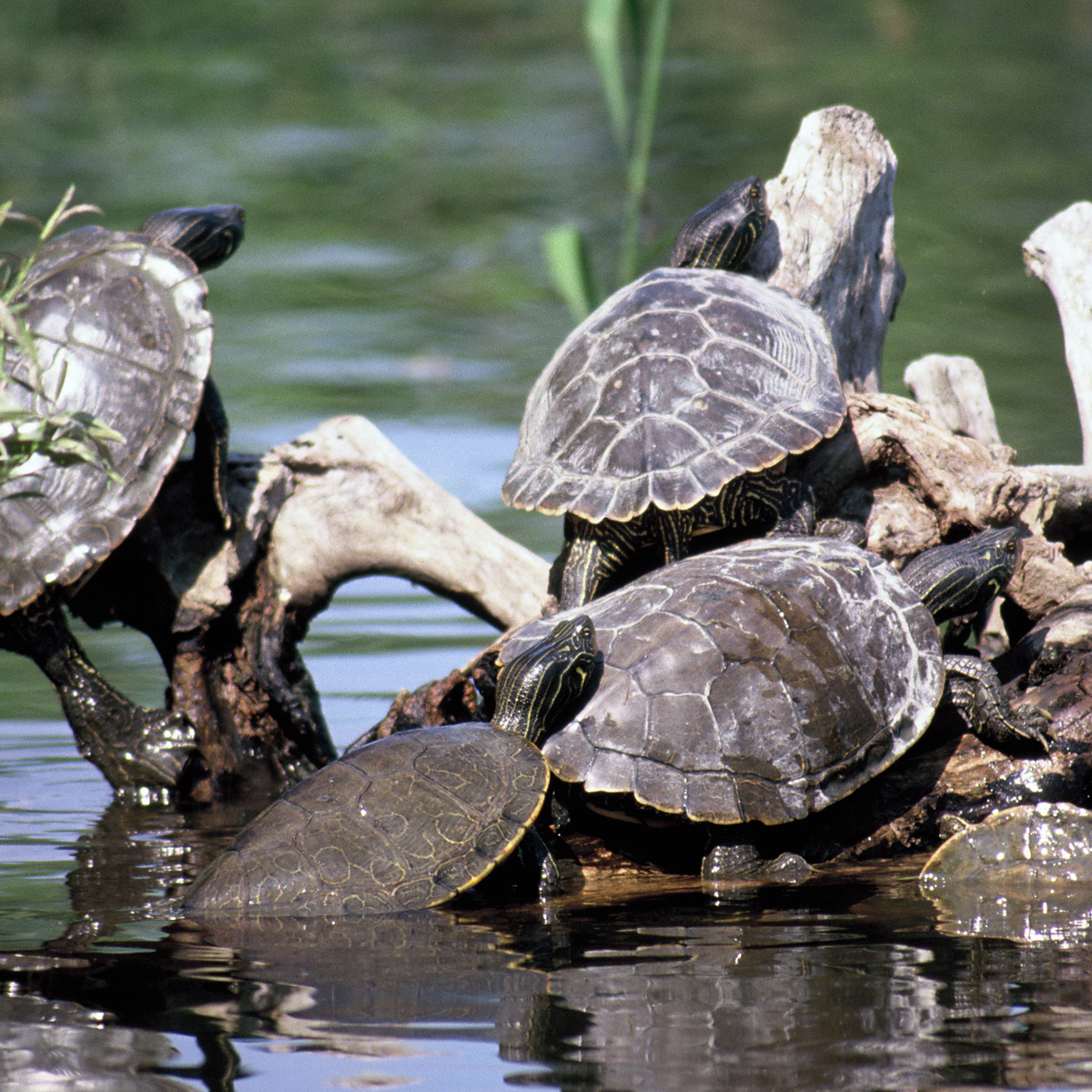
Brown garter snake
This small garter snake is present in Parc-nature du Bois-de-Liesse, Parc-nature de l’Île-de-la-Visitation and Parc-nature de la Pointe-aux-Prairies.
- It features brown tones and is characterized by the dark band on its head.
- Found mainly in the Greater Montréal region, the brown snake is partial to fields, wildlands, wood-fringes and shorelines. It can also be found on vacant lots and near buildings.
- Like the majority of Québec’s garter snake species, it is considered a threatened or vulnerable species.
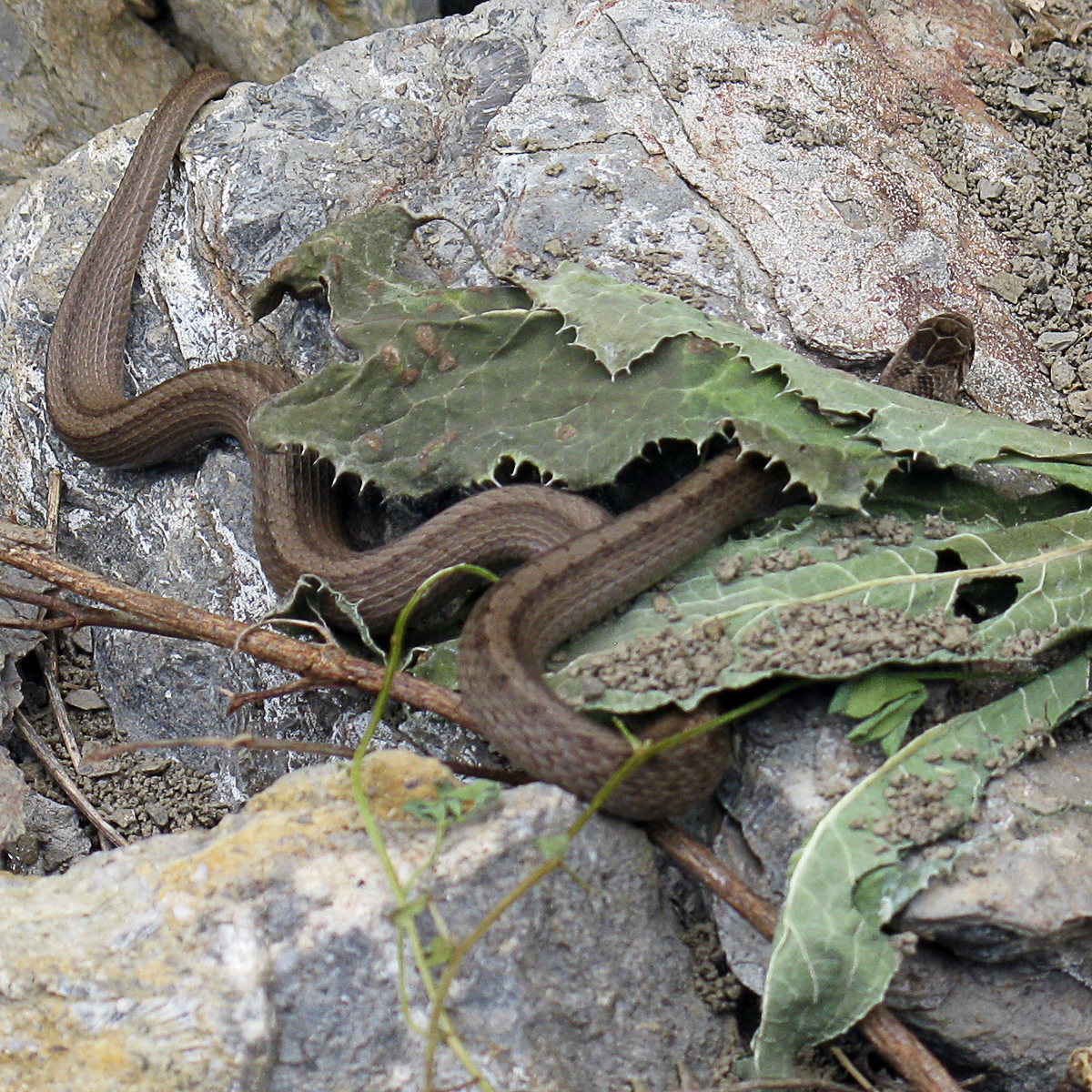
Bobolink
Considered a threatened species, this bird is present in Parc-nature du Cap-Saint-Jacques and Parc agricole du Bois-de-la-Roche.
- The bobolink builds its nest along the ground in cultivated prairies and fallow grasslands.
- Its high-pitched, melodious song is reminiscent of robot sounds.
- This field-loving species will favour an agricultural environment as its nesting habitat, almost exclusively. Its decline is due, in particular, to habitat loss and intensive farming practices (exposure to pesticides and mortality caused by mowing during the mating season).
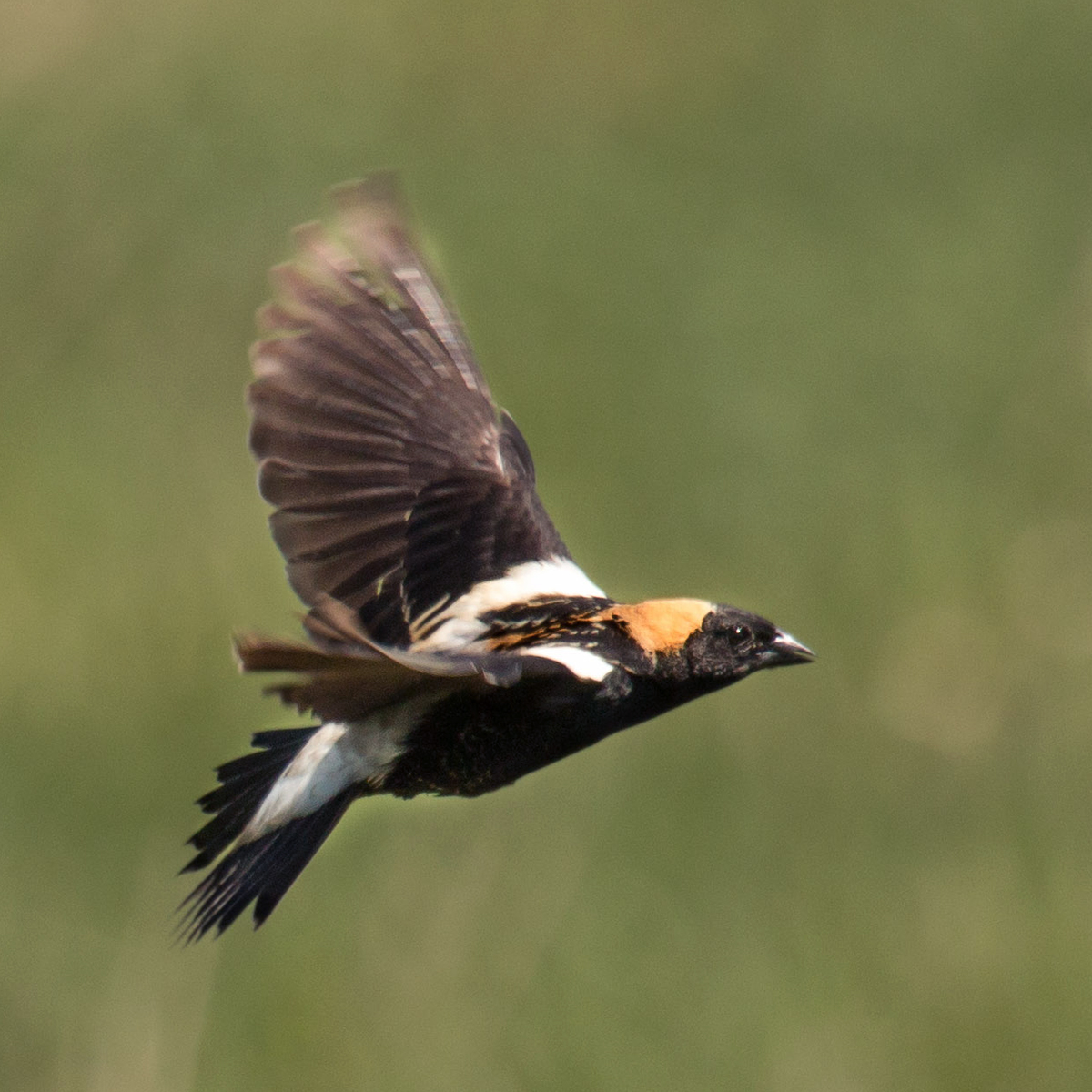
Indigo bunting
This bird is present in Parc du Mont-Royal.
- The male indigo bunting is the only completely blue bird species in Québec.
- Outside of the mating season, the male looks much like its brown female counterpart, keeping only a few bluish patches.
- The indigo bunting lives in scrublands and along leafy woodlands.
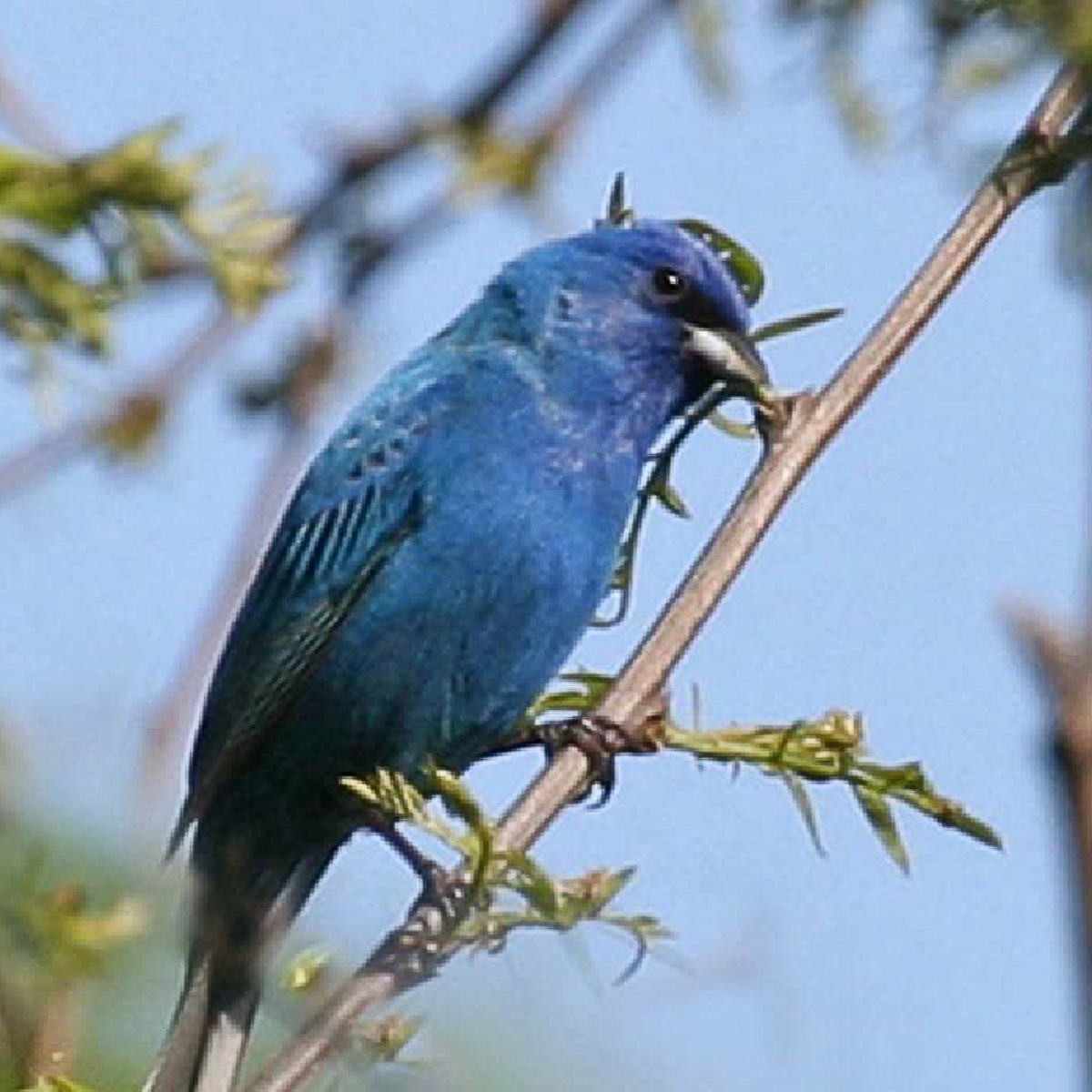
Yellow warbler
This common species is present in the majority of Montréal’s nature parks and large parks.
- This bird with striking plumage favours wetlands, fallow lands and forest edges.
- When the brown-headed cowbird, a brood parasite, lays its eggs in the yellow warbler’s nest, the latter often builds another nest above the original, which can give rise to multi-storey nests.
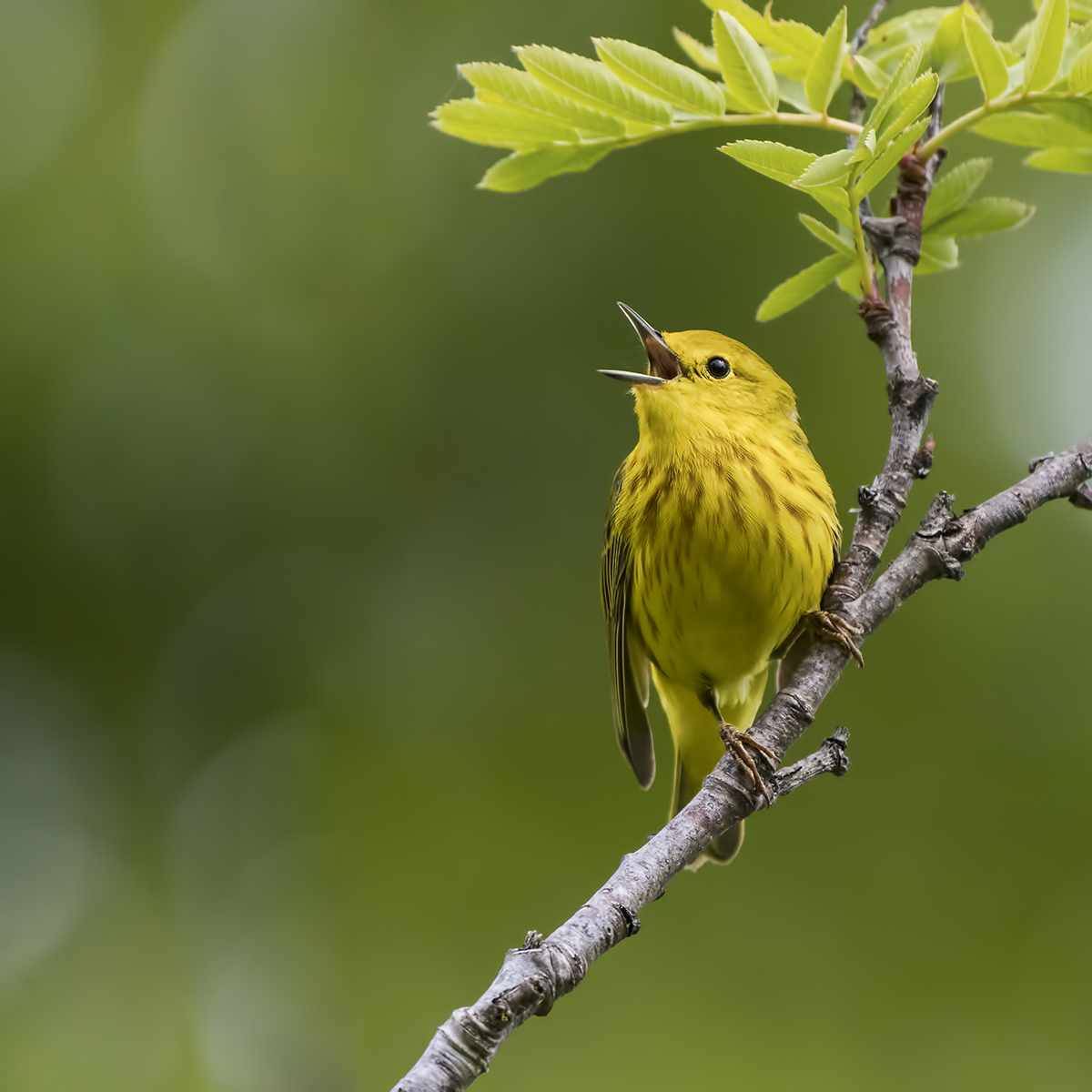
The hoary bat
This migratory species is likely to be designated threatened or vulnerable. It is present, in particular, in Parc-nature de la Pointe-aux-Prairies, Parc-nature de l’Île-Bizard, Parc-nature de l’Anse-à-l’Orme, Parc-nature du Bois-de-Saraguay, and in Parc Angrignon and Parc de Dieppe.
- The hoary bat is the largest bat species in Canada (up to 40 cm).
- This tree-dwelling species uses tree leaves as a diurnal resting place or a nursing site (reproductive females)
- An insect eater, the hoary bat chases down insects in flight in clearings near woodlands and above bodies of water.
- In urban (near natural environments) and peri-urban environments, the hoary bat feeds on insects drawn to lampposts.
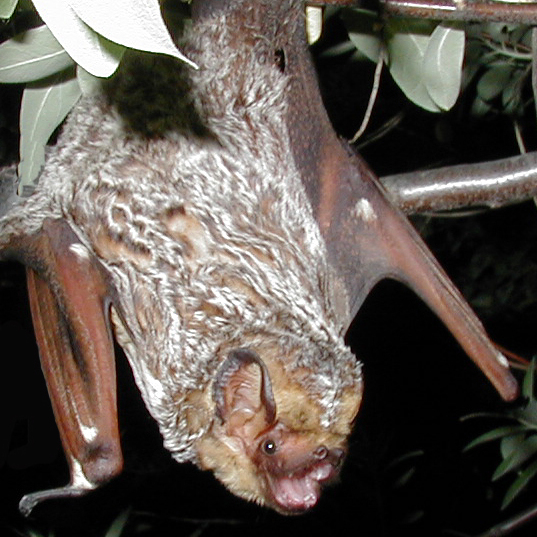
Long-eared owl
This migratory bird is present in Parc-nature de la Pointe-aux-Prairies.
- The long-eared owl has brown and buff-coloured plumage, spotted and striped, and a distinctive tawny brown facial disc.
- On its head are two long blackish tufts, which are in fact feathers that look like ears.
- It generally lives in woodlands, groves and open environments.
- After flying south for the winter, the long-eared owl returns to our forests to nest.
- Its warble can be heard during the courtship period, outside of which it is rather silent.
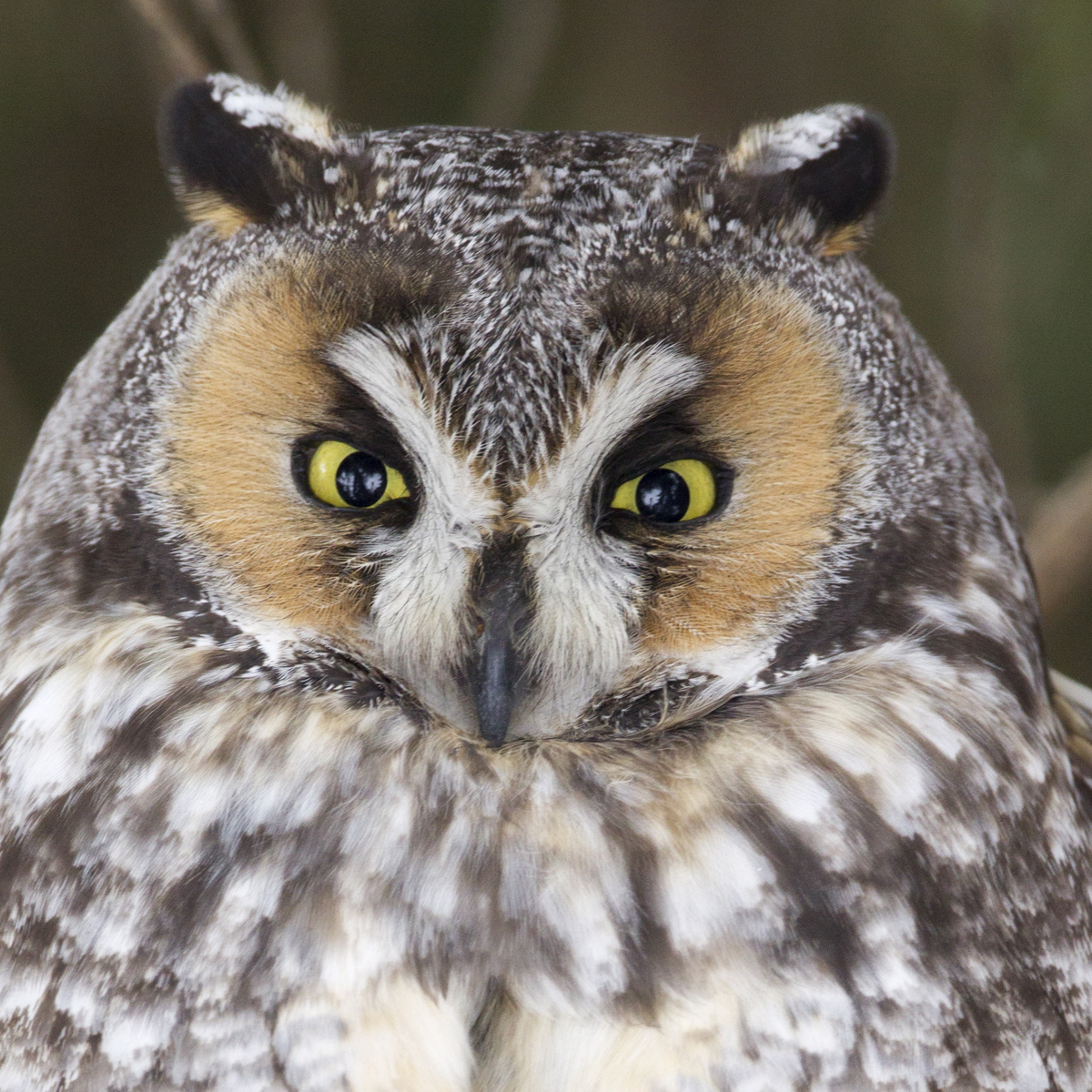
Wood frog
The wood frog is present in the majority of the city’s nature parks.
- It is distinguished by its dark brown mask at eye level. Its skin colour varies from dark brown to reddish, which allows it to blend in with the leafage on the ground.
- It favours mature woodlands and swamp forests.
- Its mating season is extremely early, sometimes beginning when there is still snow on the ground. Contrary to most other frogs, which burrow into the mud come winter, the wood frog hibernates under layers of dead leaves and other debris on the forest floor.
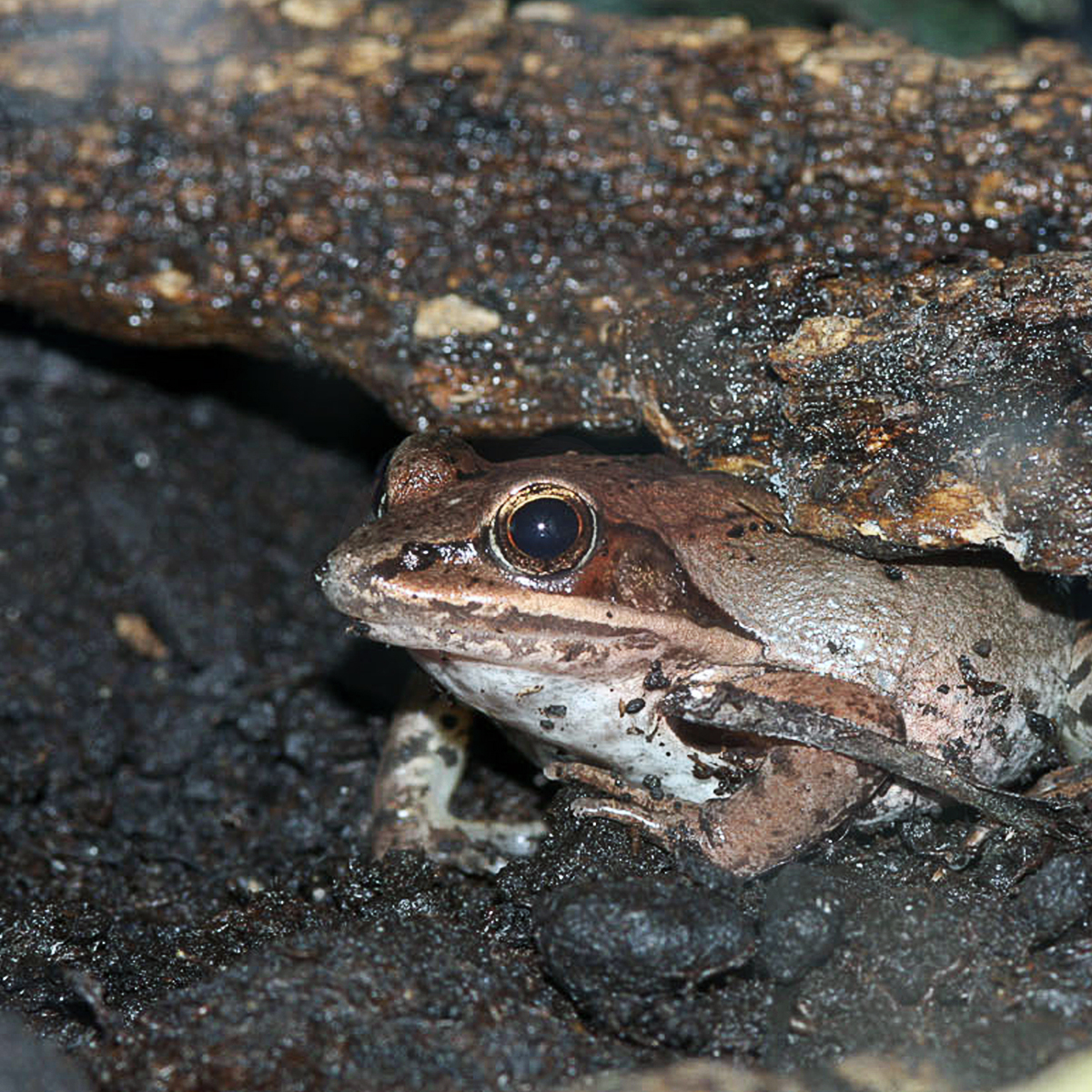
Flora
May-apple
Québec is home to only a few isolated populations of this herbaceous plant, which makes it a threatened species. One of those populations happens to be in Parc du Mont-Royal.
- The May-apple is present in the undergrowth of sugar maple forests. It grows in circular colonies.
- Its white flower, visible in early spring for five to 10 days, is observed only on individual plants that are at least 12 years of age.
- It is distinguished by its large peltate and deeply lobed leaves (30 cm).
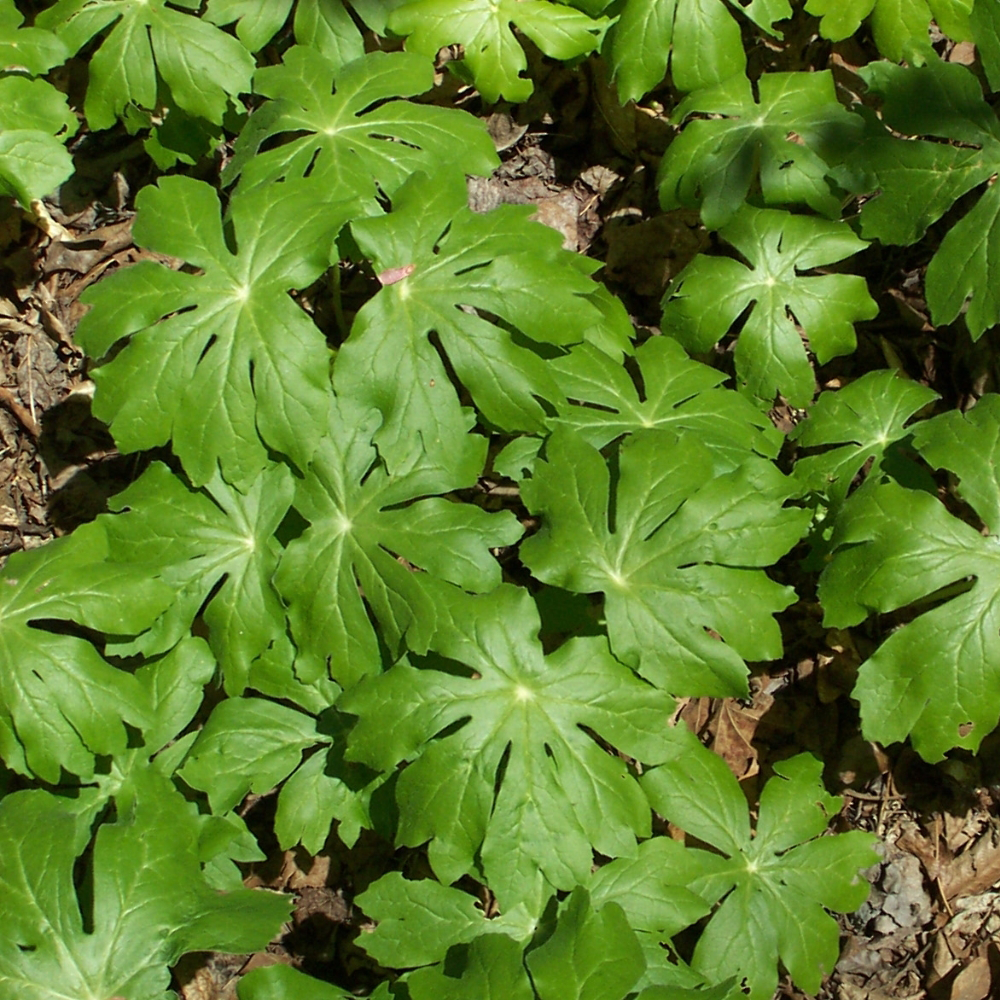
Common hackberry
This large deciduous tree is present in Parc-nature du Bois-de-L’Île-Bizard, Parc-nature du Cap-Saint-Jacques and Parc du Mont-Royal.
- Its unique bark is cracked and corky in appearance.
- Birds and small mammals appreciate its fruit, which takes on a dark purple colour at maturity.
- It tolerates a variety of conditions and stress, including pollution and poor urban soil.
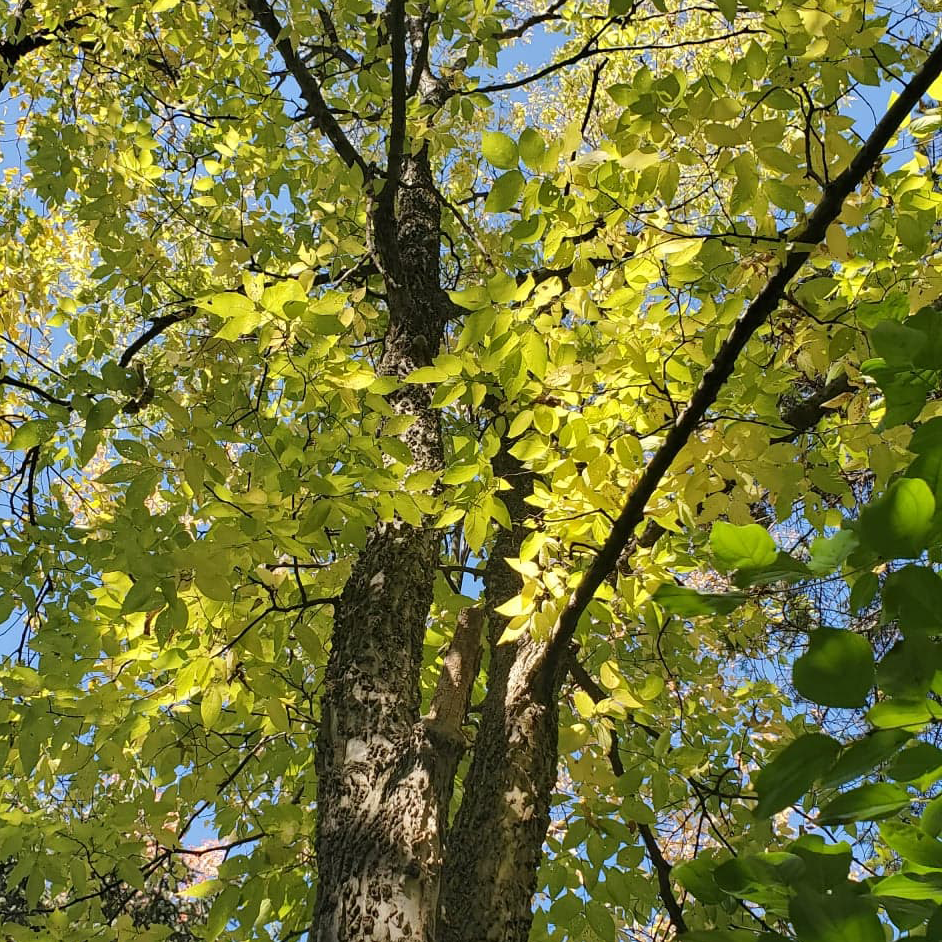
Rock elm
This tree is present in Parc-nature de la Pointe-aux-Prairies.
- It can be distinguished by its knotty blackish branches, its corky ridges and scrubby appearance.
- Due to its fragile regenerative capacity, the rock elm is threatened by urbanization and development.
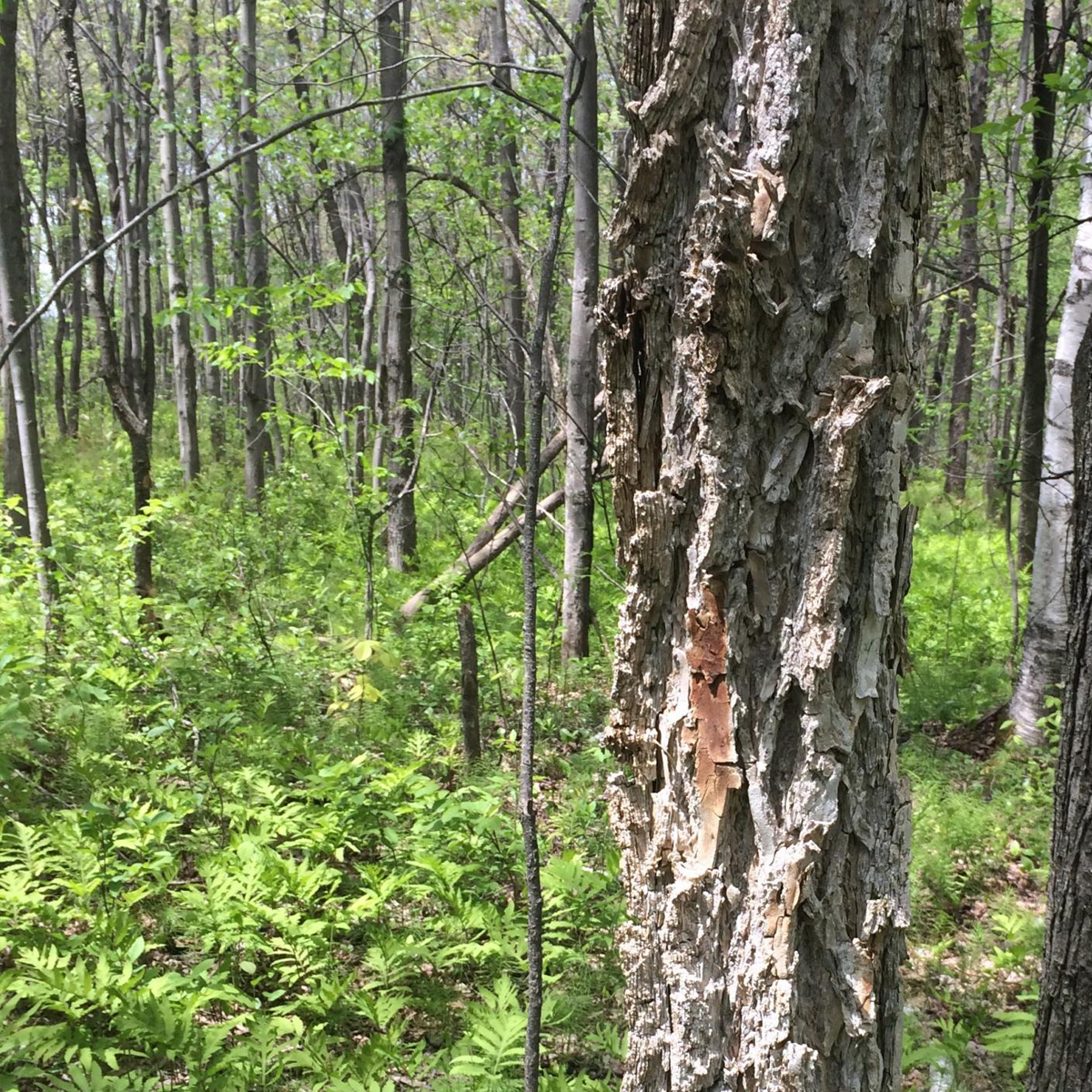
Shagbark hickory
This deciduous tree is present in Parc-nature du Bois-de-Saraguay, Parc-nature du Cap-Saint-Jacques and Parc-nature de l’Anse-à-l’Orme.
- It thrives in rich and moist soils.
- As it ages, the bark peels into long, loose strips.
- A cousin of the pecan tree, its edible nuts come to maturity in the fall and are beloved by hungry squirrels.
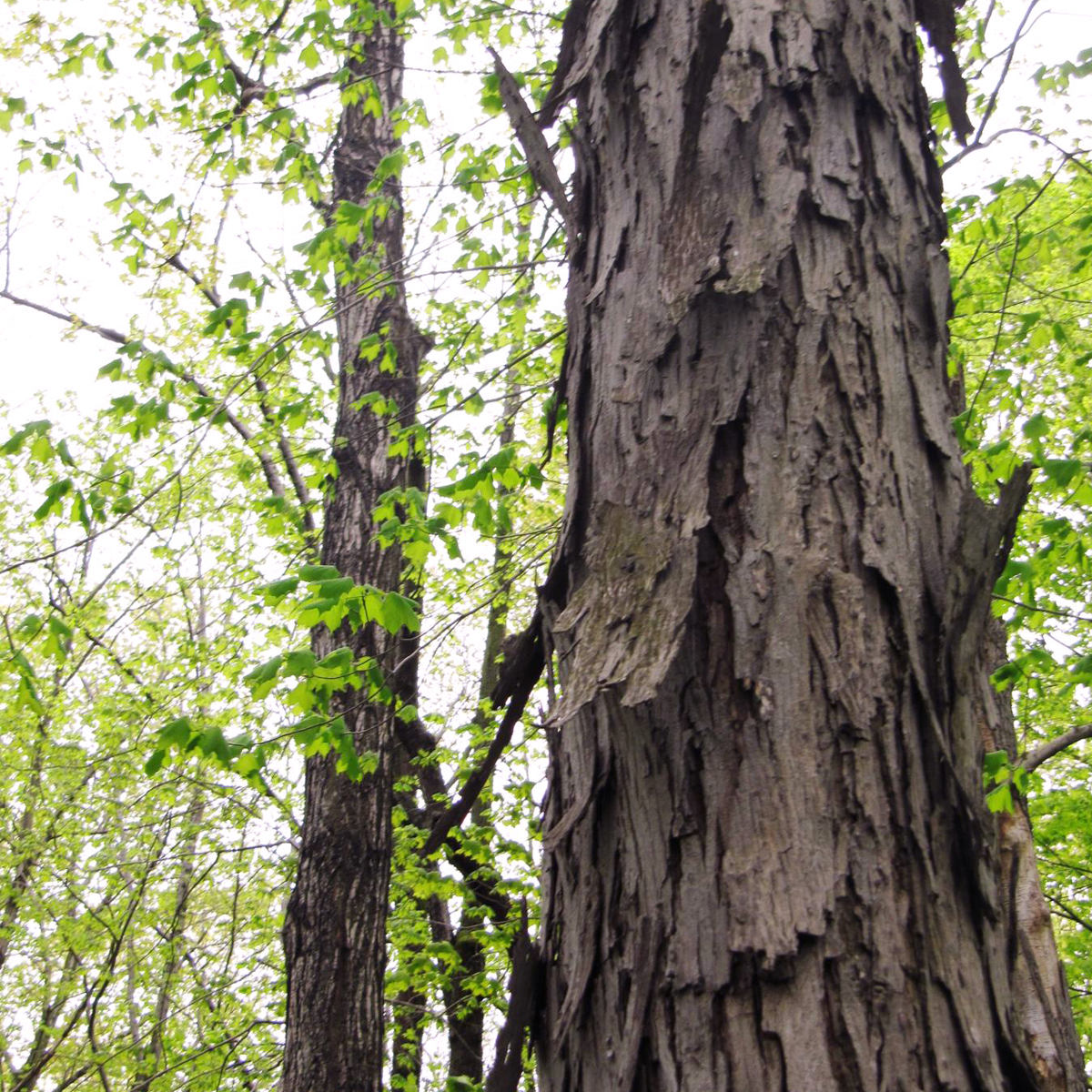
Action for endangered species
Protecting our ecosystems is at the heart of our concerns and our ecological transition project. People can contribute by transforming their way of life while taking care of their environment.
Quick search
Need help?
Contact us if you have questions.
Are you sure you want to leave this page?
This page is not available in English. You will be redirected to the English home page.